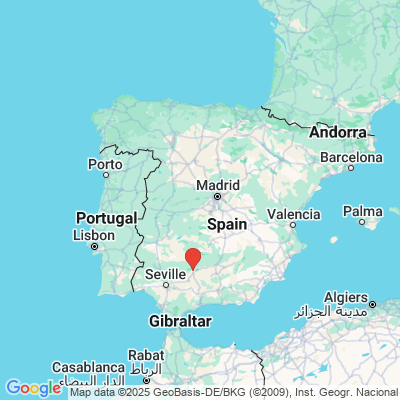The front of the sarcophagus of the Alcázar de Córdoba.
With its imposing dimensions and intricate reliefs, this marble sarcophagus offers a fascinating glimpse into the funerary traditions of the Hispano-Roman elite. Discovered in 1958 during sewer construction in Córdoba, it had remained hidden for centuries in a necropolis in the Huerta de San Rafael del Brillante. Its iconography suggests it served as the final resting place for multiple members of a freed family, likely of Greek origin.
Carved between 220 and 240 AD from a single block of marble, its reliefs depict the journey to the afterlife. At the center stands the half-open gate of Hades, symbolizing the transition to the beyond, flanked by imposing ram and lion heads, representing strength and determination. On either side of this central scene, the soul guides of the deceased are portrayed: a magistrate holding a scroll, accompanied by a philosopher guiding him towards the afterlife, and his wife, depicted with a dove at her feet, a symbol of purity and domestic devotion.
Every carved detail showcases masterful craftsmanship—the flowing folds of the garments, the expressive gazes, and the rich symbolism all reflect a profound belief in life after death. The winged horse Pegasus and a panther on the shorter sides further reinforce this theme—symbols of swiftness and power needed to reach the underworld.
Today, this exceptional sarcophagus rests in the Alcázar de los Reyes Cristianos in Córdoba, where it continues to remind us of a civilization where art, faith, and the eternal journey were inextricably linked.
Based on: El sacófago romano del alcázar de Córdoba, published on www.arteiconografia.net.


